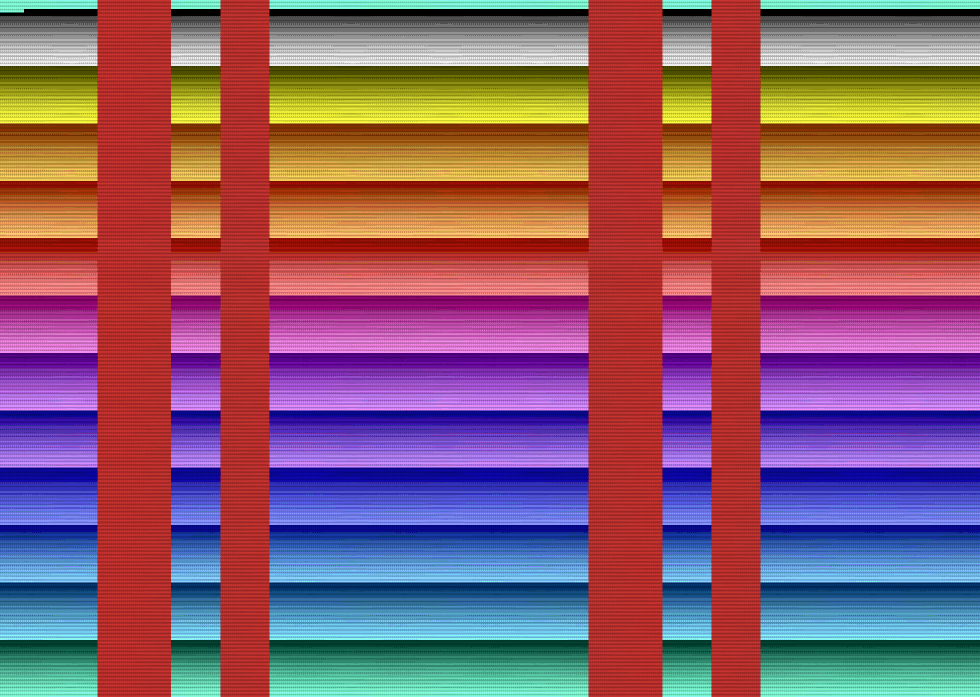Erik Hollembeak
Atari 2600 Sketches No. 1

Drawing graphics on the Atari 2600 is something of a production compared to more modern computing platforms. The hardware has no framebuffer to speak of, no video RAM at all, and only 128 bytes of RAM.
The image above is from a program created to demonstrate a hardware feature
designed as a solution for the limited graphics task of drawing backgrounds –
playfield graphics. By writing a particular pattern of ones and zeros to three
playfield registers PF0, PF1, and PF2 which mapped to the Television
Interface Adapter (TIA), making it relatively striaghtforward to draw simple
patterns to the screen.
For the purposes of demonstration, PF1 has its contents incremented by one
every 20 frames. Notice the pattern of vertical red stripes changing like the
ones in a binary number incrementing upward.
With a bit of cleverness and careful timing, the playfield graphics can be used to draw surprisingly sophisticated items in the scene. For a more complete treatment of the capabilities of the TIA chip and playfield graphics, the 2600 (Stella) Programming Guide is the Atari documentation of record. It’s been helpfully adapted to HTML here.